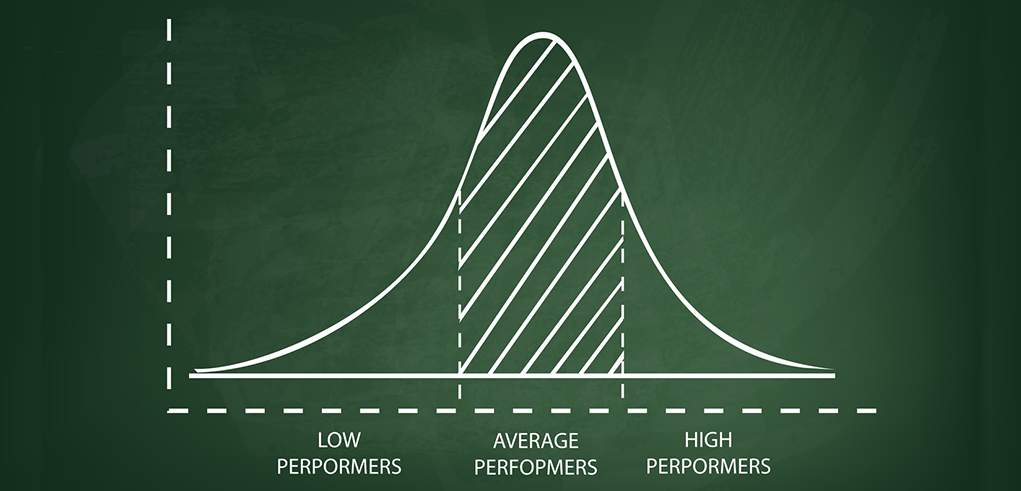A bell curve is a performance management technique that is used to assess and measure the performance and hold people accountable. This technique can be applied to many facets of life and business, and a sales team is no exception.
A bell curve is an important business tool for sales reps and their companies, something that determines where leaks exist in the sales funnel and where improvements can be made; helping companies define how many of their sales representatives are high-performing, middle-of-the-road, or low-performing. All of which can help management to redefine training and improve sales quota attainment.
How Companies Benefit from Implementing a Bell Curve
By implementing a bell curve, companies can easily identify the performance level of every employee. This provides a straightforward system for ranking employees; something which is critical in the evaluation of employee performance including improvements, declines, and regular maintenance.
How Companies are Disadvantaged by a Bell Curve
With a bell curve, the biggest disadvantage is the fact that managers are forced to segment their employees by performance. This could unfairly place employees in a lower-tier simply because they have to distribute a specific percentage of employer performances into each range. Sometimes using this scale to rate salespeople is simply too rigid and it can cause negative competition among employees which could in turn impact morale.
Levels of a Bell Curve
When organizations rank their sales teams along a bell curve, employees are divided into different levels based on their performance:
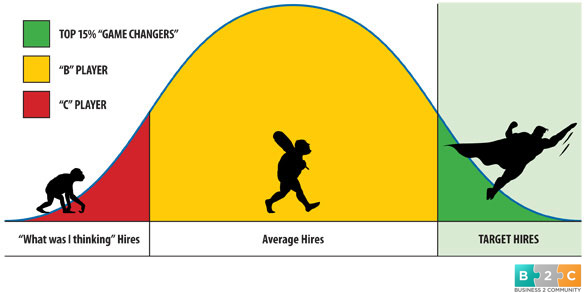
High Performing Organization
Those who fall under the high performer category are employees that a company wants to keep happy, they want to retain them because high performers don’t require any coaching and are very effective when working independently.
Companies that achieve high performer levels for the majority of their employees tend to focus more heavily on consistently achieving high performance across their sales team. Within the high performer category, many employees on the opposite end of the spectrum might leave the company simply because they know they can’t keep up with the level of talent that surrounds them.
Average Performing Organization
Average performers are employees, with coaching, could rise up to the high-performance tier. Conversely, without coaching, they may drop to the low/non-performer tier. It’s best for organizations to be in this situation because it paves the way for serious potential and optimizes growth with the right tools.
Low/Non-Performer Organization
An organization with many low/non-performers is usually the result of making bad hires. These are probably people who aren’t a good fit for sales so even if you do train them it’s not going to result in a lot of improvement.
Situations like this mean that management should take a step back and recognize that sales issues are caused by the sales staff specifically but rather by bad hiring tactics by the management. Most of the time poor management is a critical problem here and these problems compound with time. The bell curve continues to shift to the left because top performers will leave the company and work with a better organization. Obviously, this is something that should be avoided and rectified.
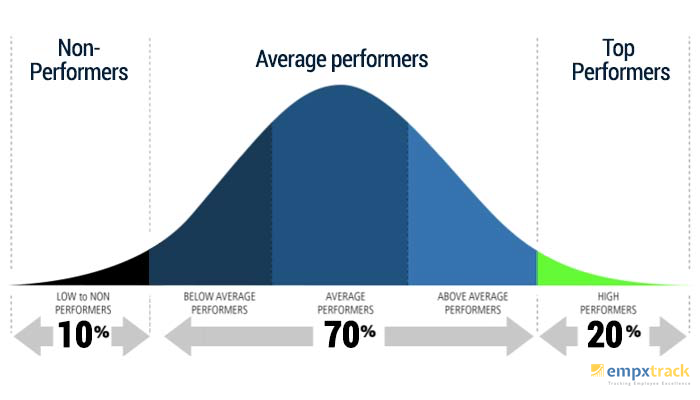
An Ideal Sales Performance Bell Curve
Ideally, it is best for a sales performance bell curve to be heavily situated around the mid-performance level; or a 20, 70, 10 ratio or a 10, 70, 20 distribution ratio.
The difference between low-performing and average performing reps is minimal, but the difference between top performers and average performers is very significant. Achieving a 5% performance improvement from your middle 60-70% of employees equates to over 70% more revenue than you would get if you achieved a 5% performance improvement from your top representatives.
This is why bell curve adjustments are so important. Focusing resources on your mid-tier is going to get you the greatest return on your investment.
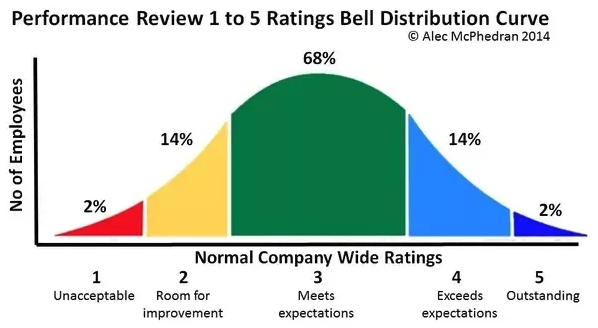
A Good Bell Curve Optimizes Productivity
To optimize productivity with an optimal bell curve, you can use software like SPOTIO. SPOTIO makes your sales team 46% more productive. It does this by shifting the bell curve forward toward improved productivity for everyone. Software like this helps to improve your bell curve on a general level which has been correlated to increased productivity.
There are key features that you want to look for in the software you select. You want to be able to track trends and establish your bell curve. You also want the data that can be applied to your sales staff to help establish, define and refine the perfect sales bell curve.
How is this achieved?
Productivity is defined by three important things:
- Shorter Sales Cycles
- Increased Conversion Rate
- Increased Revenue
How sales software (like SPOTIO) helps achieve the ideal bell curve
When you use sales software it engages your entire sales team and provides reliable information to help sales reps achieve performance goals. The ideal bell curve can only be achieved when sales reps have clear visibility into the needs of their customers alongside the analytics that helped them to get the appropriate products to those customers.
The KPI’s from software like SPOTIO show managers what percentage of sales reps are making their plans, what the composition of the pipeline is. For sales representatives this might not be something that affects their job today but it can enhance their career long-term by providing them with a sales strategy and sales execution that work in tandem. When everyone in an office works toward the same goal, revenue and profitability increase for years to come.
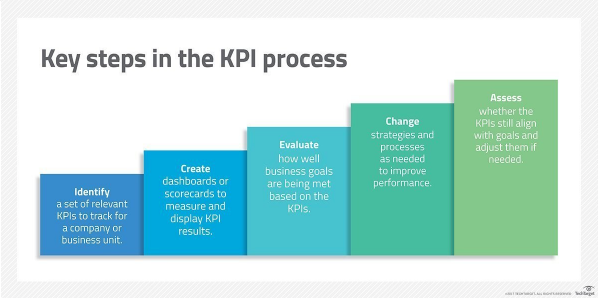
In the end, using sale software as a manager will give you the ability to improve the performance of your middle-tier sales reps. Tools can be provided, reliable data can be viewed, and everyone in your sales funnel can work together toward the same goals.
By improving the performance of your mid-tier employee you can yield the highest ROI for your organization.
_____
Questions or comments? Contact SPOTIO at [email protected] or comment below.
SPOTIO is the #1 field sales acceleration and performance management software that will increase revenue, maximize profitability, and boost sales productivity.
Want to see a product demonstration? Click here to see how SPOTIO can take your sales game to the next level.
